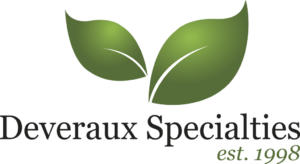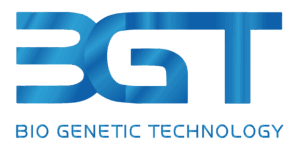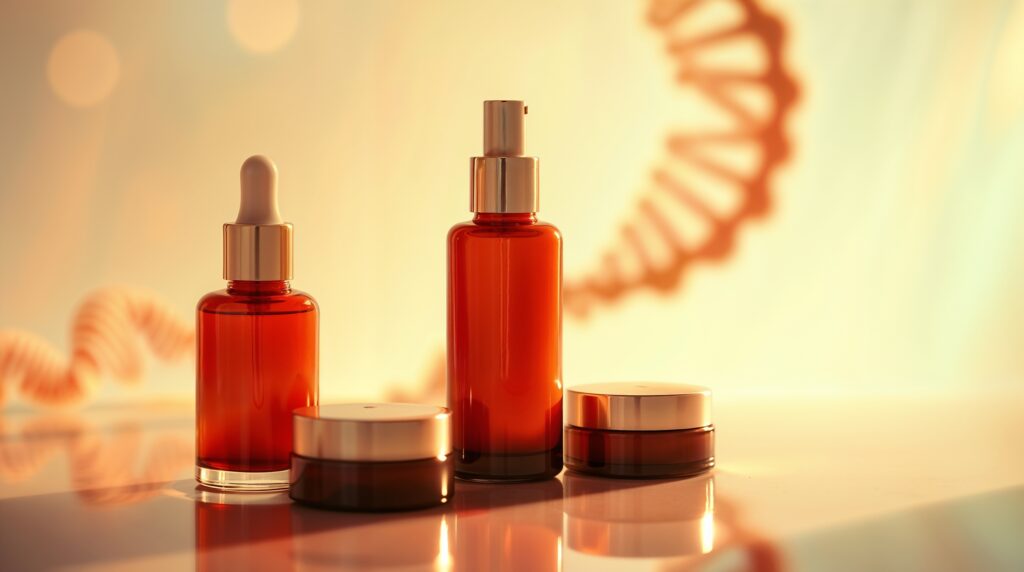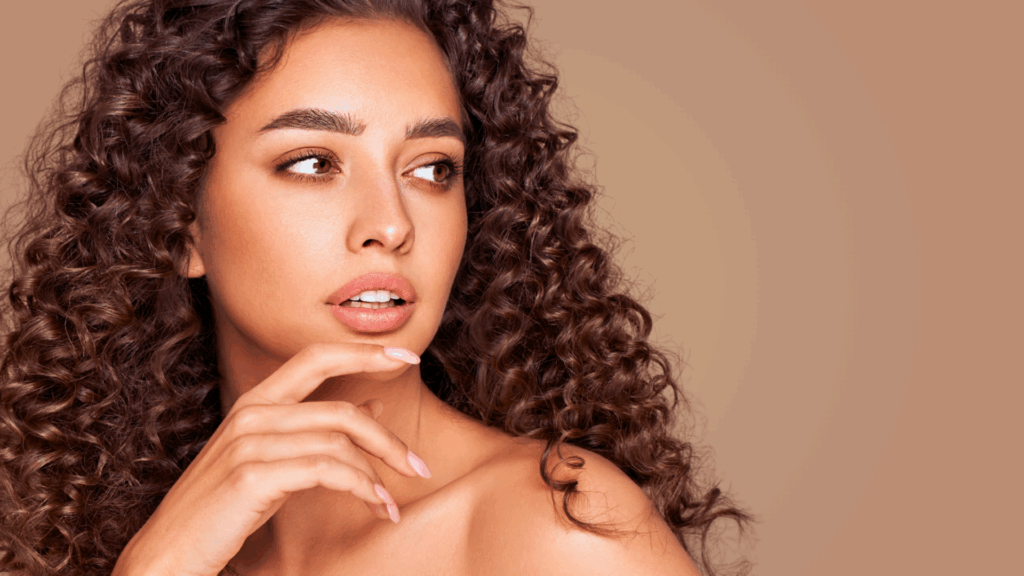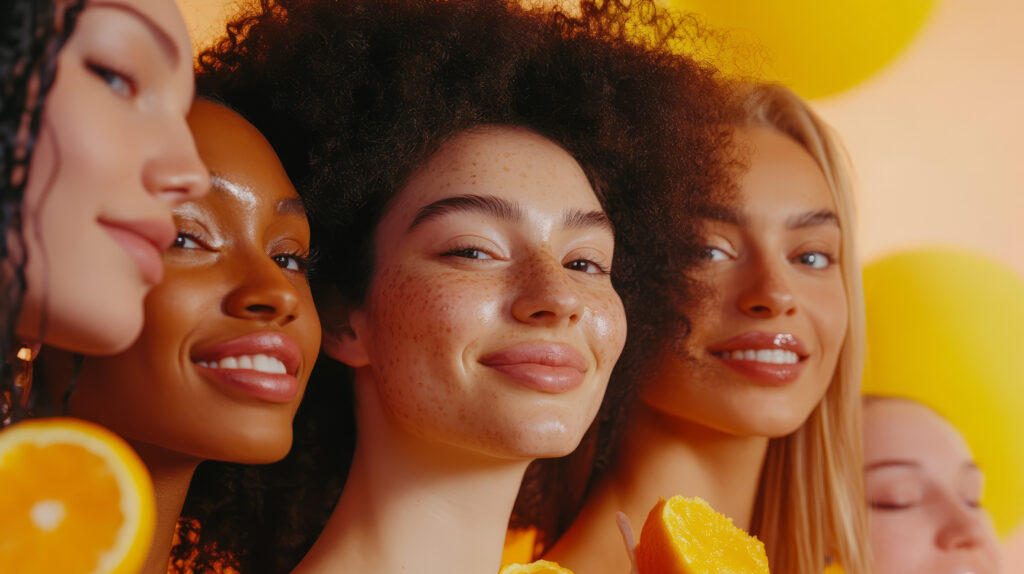The Blurring Lines Between Skin and Scalp
In recent years, the hair care industry has undergone a noticeable transformation—one that mirrors a broader shift in how consumers think about personal care. No longer is the scalp viewed as an afterthought in formulation strategy. Instead, it has emerged as an extension of facial skin, deserving the same level of precision, science, and multifunctional benefit. This change has given rise to the “skinification” of hair care—a trend that’s been steadily gaining traction among formulators who recognize that healthy hair begins with a healthy scalp.
In practical terms, this movement translates to hybrid scalp-cosmetic products that combine the sensorial elegance of skincare with the biological efficacy of targeted actives. Consumers are now seeking shampoos that hydrate like serums, conditioners that soothe like moisturizers, and scalp treatments that deliver visible improvements in follicular density and comfort. As expectations grow more complex, formulators must find ingredient technologies that can deliver across these fronts without compromising stability, clarity, or compatibility. This is where BGT™ POLG, BGT™ DLG, and BGT™ Co-Tri-P1—three multifunctional ingredients from Bio Genetic Technology—offer a robust, modern toolkit.
Why Scalp Care Is Harder to Formulate Than Ever Before
The evolution of consumer demands has made modern scalp care formulation increasingly nuanced. Formulators are no longer developing products to simply cleanse or condition. Today’s hair and scalp care must repair the barrier, rebalance microbiota, soothe inflammation, restore hydration, and, in many cases, stimulate hair growth—all in a single system. Adding to the complexity, these benefits must be delivered through elegant textures that are non-greasy, rinse easily, remain shelf-stable, and are often free from silicones, sulfates, and parabens.
One of the most significant formulation challenges lies in achieving these effects in clear, lightweight systems. Leave-on scalp serums, transparent shampoos, and non-occlusive emulsions are now preferred formats. However, delivering high-efficacy actives in these systems—especially peptides, ceramide mimetics, or lipid-based agents—often requires a delicate balance. Traditional emollients may destabilize formulations or leave residue. Peptides can degrade in incompatible environments or fail to penetrate effectively without delivery optimization.
Furthermore, many hair growth ingredients traditionally relied upon—like minoxidil—come with limitations in formulation flexibility and user tolerability. Meanwhile, the biological processes behind hair loss and scalp imbalance—such as inflammation, oxidative stress, and lipid depletion—require actives that work with the scalp’s natural architecture. The challenge, then, is clear: How do you deliver targeted biological effects in a cosmetically pleasing, multi-benefit format?
BGT’s Solution: The Power of a Three-Part System
BGT™ POLG, BGT™ DLG, and BGT™ Co-Tri-P1 provide a strategic solution to the hybrid formulation challenge. These ingredients were developed with the understanding that scalp health is inherently tied to skin health, and they perform with that biological continuity in mind.
BGT™ POLG is a phytosteryl/octyldodecyl lauroyl glutamate ester—a ceramide-like emollient derived from 100% plant sources. It mimics the skin’s natural lipid structure, forming a breathable, non-occlusive film that enhances barrier integrity and locks in moisture. It excels in improving rough, dry, or irritated scalp conditions while being compatible with clear, lightweight formulations.
BGT™ DLG (dioctyldodecyl lauroyl glutamate) extends this functionality by serving as a moisturizing, emulsifying ester with a unique branched structure. This structure not only provides high emolliency and water retention but also enhances hydrolytic stability under harsh conditions—ideal for high-pH shampoo systems. Its ability to form a thin lipid film that soothes and protects the scalp makes it well-suited for baby care, sensitive formulations, and transparent products.
Finally, BGT™ Co-Tri-P1 is a bioavailable copper tripeptide (GHK-Cu), known for its potent signaling properties in skin and follicle regeneration. It promotes hair follicle vascularization, extends the anagen phase, and supports collagen, elastin, and ECM synthesis. Notably, this peptide also exhibits antioxidant and anti-inflammatory behavior, providing added value in managing inflammatory scalp conditions while visibly improving hair thickness and growth.
Together, these three ingredients offer a targeted, synergistic approach to designing hybrid scalp products that hydrate, restore, and stimulate—all while maintaining desirable textures and clarity.
Formulation Stability, Bioavailability, and Barrier Repair—Proven by Design
The performance of these ingredients isn’t theoretical; it’s backed by structure-function logic and biological compatibility. BGT™ POLG and DLG are both derived from glutamic acid and fatty alcohols/sterols, which closely resemble components of the skin’s natural barrier. Their lipid structures integrate easily with stratum corneum lipids, reinforcing barrier strength and reducing transepidermal water loss (TEWL). This is particularly valuable in formulations for dry or irritated scalps, where lipid depletion is a common concern.
BGT™ POLG has been shown to outperform traditional emollients in both skin feel and barrier repair efficacy. Its lipid-like molecular structure allows it to act like a ceramide–cholesterol hybrid, which is critical for supporting skin integrity without synthetic occlusives. When incorporated into hair conditioners or leave-on scalp serums, it imparts a smooth, non-greasy finish while restoring comfort and hydration.
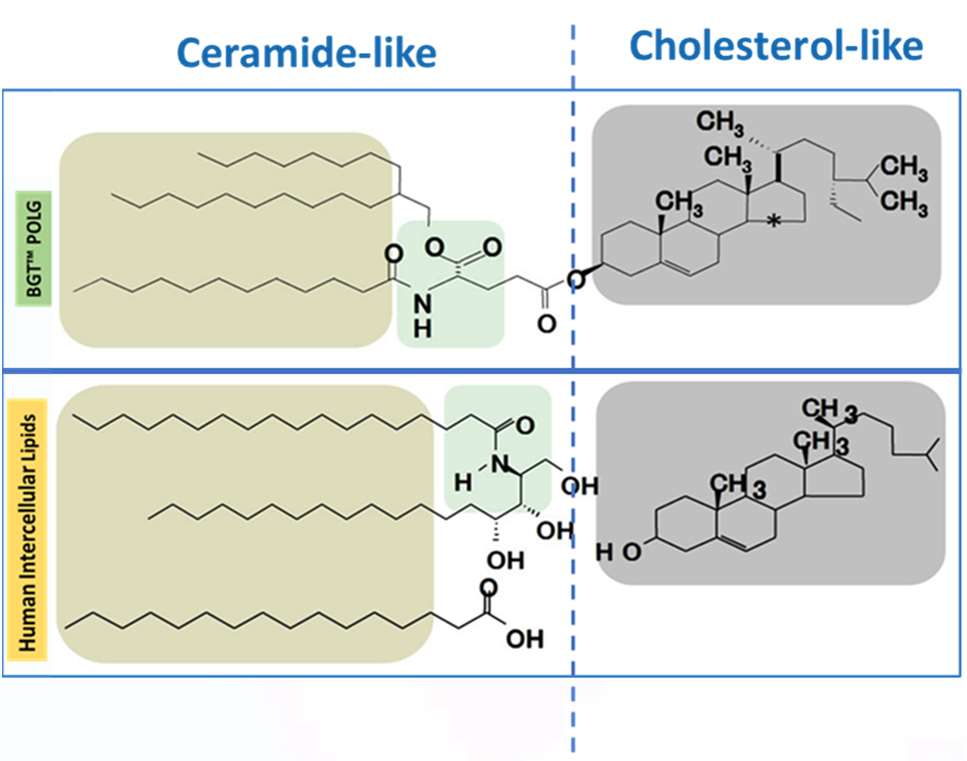
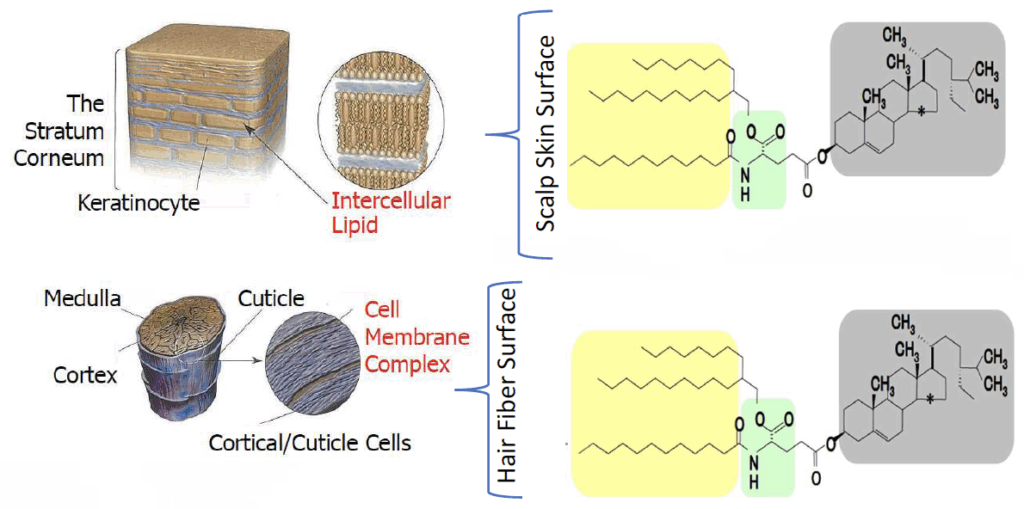
BGT™ DLG’s branched-chain structure enhances steric hindrance, which minimizes solvent migration and helps retain moisture longer on the scalp. Its role as an “emulsifying emollient ester” allows for stable emulsion formation without additional emulsifiers, ideal for simplifying INCI lists in minimalist formulations. Its hydrolytic stability under high-pH testing also gives it a technical edge when formulating cleansing products, where many lipid esters degrade.

BGT™ Co-Tri-P1, meanwhile, operates at the cellular level. Studies show that copper tripeptides stimulate angiogenesis, ECM remodeling, and even adipocyte proliferation near the follicle—factors strongly linked with hair regrowth and follicular health (Pickart et al., 2015). These peptides are small and bioavailable, capable of penetrating the scalp and delivering copper ions precisely where follicular metabolism is most active. In clinical settings, GHK-Cu has been found to support not only regrowth of hair but also increase the visible thickness of existing strands by expanding follicle diameter.

This combination of skin lipid restoration, emollient-driven barrier support, and bioactive peptide signaling creates a multi-dimensional formulation strategy that meets both functional and consumer expectations.
The Strategic Shift Toward Scalp-Centric, Multi-Benefit Systems
The rise of hybrid scalp–cosmetic formulations is not a passing trend. It reflects a fundamental change in how consumers and formulators alike think about wellness and efficacy. Today’s consumer expects visible results, sensory elegance, and scientific credibility—all within a single bottle. In this climate, ingredient technologies that can do more with less are highly valuable.
The BGT™ POLG, DLG, and Co-Tri-P1 trio addresses these expectations from multiple angles. They simplify formulation by offering multifunctional benefits—hydration, repair, soothing, growth stimulation—without requiring multiple incompatible or redundant ingredients. They also support the rise of minimalist, clean-label products by reducing the need for extra emulsifiers, silicones, or synthetic conditioners.
Equally important is the biological logic behind these ingredients. Rather than masking symptoms, they work with the skin and scalp’s natural processes—rebuilding lipids, signaling regeneration, and protecting cellular integrity. As a result, they fit seamlessly into formulations targeting sensitive scalps, thinning hair, post-procedure recovery, or simply consumers seeking next-generation performance from their daily routines.
In the context of rising global interest in hair loss prevention, sensitive scalp care, and the expansion of peptide-powered systems, the value proposition for these ingredients is clear. For formulators looking to stay ahead of the curve, the integration of biomimetic esters and signaling peptides is not just smart—it’s essential.
Scalp Care Is No Longer Optional—It’s Foundational
The demand for intelligent, multifunctional scalp care is growing—and the opportunity for formulators is real. With BGT™ POLG, DLG, and Co-Tri-P1, Deveraux Specialties offers a high-performance ingredient system that addresses multiple formulation challenges with scientific precision and user-friendly application.
Whether you’re creating a calming scalp serum, a high-performance conditioner, or a lightweight anti-aging hair treatment, these actives provide the foundation for a formulation that’s as smart as it is effective.
Ready to create hybrid scalp-cosmetic products that deliver real results? Contact Deveraux Specialties to request samples or formulation support today.
Resources
- Allure. (2025). The hair-care trends that will define 2025. https://www.allure.com/story/hair-care-trends-2025
- ATX Infusion and Wellness. (n.d.). Peptides for Hair Growth: A Science-Backed Approach. https://www.atxinfusionandwellness.com/peptides-for-hair-growth-a-science-backed-approach
- CosmeticsDesign-Europe. (2025, April 7). Peptide-powered haircare: Why copper peptides are trending. https://www.cosmeticsdesign-europe.com/Article/2025/04/07/peptide-powered-haircare/
- Elle. (2025). Best Peptide Products for Hair Growth. https://www.elle.com/beauty/hair/g64981507/best-peptide-products-for-hair-growth/
- Harper’s Bazaar. (2025). Peptides for Hair Growth: How They Work and Why They’re Everywhere. https://www.harpersbazaar.com/beauty/hair/g64255177/peptides-for-hair-growth/
- Pickart, L., Vasquez-Soltero, J., & Margolina, A. (2015). GHK Peptide as a Natural Modulator of Multiple Cellular Pathways in Skin Regeneration. BioMed Research International, 2015, 648108. https://doi.org/10.1155/2015/648108
